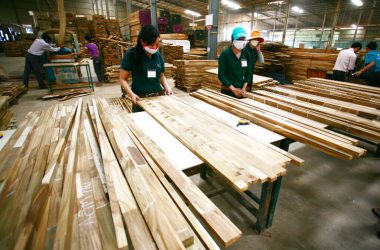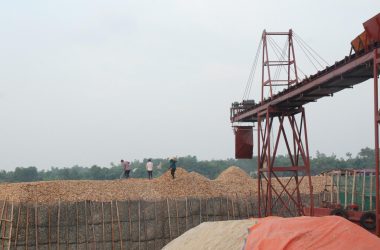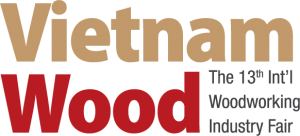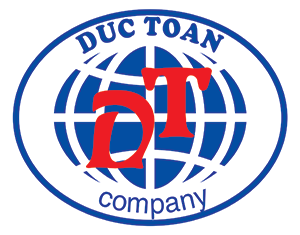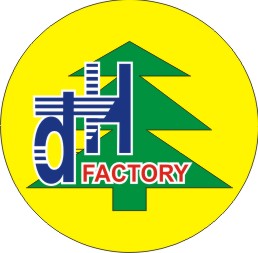How to restrict the export of woodchips and timber raw materials set by the Government, but still ensure that it does not affect the manufacturing and business activities of enterprises, and larger, it doesn’t affect forest growers, which has been becoming a problem to solve with the State authorities.
The Government also has many policies and regulations to orient the export of woodchips, to increase the processing after chips, and to plan the areas of big timber materials to ensure the security of material wood for furniture processing. One of the basic measures has increased the woodchip export tax by 2% since 2016, but in March this year, the Ministry of Finance proposed to increase the export tax of this goods from 2 % to 5%, in order to ensure the sources of wood materials for domestic production, at the same time it does not affect too much on the suppliers who are afforestation households, restrict the situation of forest growers for price squeeze, the people harvest young timber for making woodchips.
Problems need to solved
In 2018, Vietnam exported a woodchip volume of nearly 10.4 million tons of dry wood, equivalent to more than 20 million m3 of round timber. Vietnam has earned an export value of US$1.34 billion from this volume. These figures surged after the slump in 2016. In the first 4 months of 2019, Vietnam’s export volume has soared to nearly 4 million tons, equivalent to nearly US$0.56 billion in turnover. The strong growth in both export volume and value of woodchip in the first months of 2019 reflects the “dodging” psychology of export tax which is planned to increase to 5% in 2019.
The import and export statistics from Vietnam’s General Department of Customs on export turnover and volume of woodchip for the period of 2014 – 2019 show complicated changes in the export wood chip market. The developments on the market show that the tax policy increased, export tax of this goods has greatly influenced the process of manufacturing and business activities of enterprises and households.
According to Mr To Xuan Phuc, the export turnover of woodchips increased to US$1.34 billion in 2018, the booming development of the woodchip industry made an important contribution to US$8.9 billion in the total export turnover of Vietnam’s timber and wood products in 2018, and made the risks for the wood industry itself, rather than for the whole forestry sector in Vietnam.
Its influence has spread throughout the supply chain of export woodchips, which has raised many issues that need to be thoroughly analyzed and find solutions for the best suit with the rules of the market and for the market. One question is whether the policy of increasing the woodchip export tax by 2% has achieved the goal of restricting the export of raw material timber and the furniture processing industry has been ensured the input source of raw materials including quality and reasonable price or not?
In fact, the volume of export woodchips seems to be higher than the value of export turnover. The volume and export value increased sharply before the export tax increased to 2% took effects, then fell sharply from January 1, 2016. And the export volume and value of woodchip increase strongly in recent months as there is a draft of increasing export tax to 5%.
Another question is whether the same situation shall be happened like 2016 until now as the wood chip export tax will increase? If the old problem repeats, which solutions to compensate for the losses in the timber industry, businesses and millions of households on the whole country?
In fact, when imposing the export tax of 2% from the beginning of 2016, equivalent to US$2.5-2.8 per ton of dry woodchip, the average export price of woodchips in 2016 has not increased, otherwise it has decreased by 6%, it is about US$8 per ton dry woodchip compared to 2015. With the current capacity of export woodchip industry, the value loss of the whole export market of woodchip is huge, and it has affected the forestry industry in general.
Insider sayings
According to enterprises, such an increase is quite high (up to 150%), while businesses have planned to prepare for their production at a planned cost. If the Government would like to increase by 5% tariff, the Government needs a roadmap and demonstrate the need to increase export tax, the impact of the increase in export taxes affects the operation chain of the woodchip industry. What I wonder is that, in the case of a tax increase, enterprises will deduct from the purchase price of raw materials, so forest planters are still the last affected ones, at the same time, we must also reevaluate the effectiveness of afforestation, I think, the State authorities need direct consultation from households, planters and the contribution of experts as the bases for the draft in order to raise the export tariff of woodchips.
Meanwhile, in order to do well the policy of making the sources of big timber materials, the Government needs to assess the financial capacity of the forest growers, which is interested by the direct factor for the cycle of planting forests for timber materials and many forest planters, especially mountainous farmers. Currently, timber raw materials which use to process require the FSC, while forest growers are planting under small households with small area, they are dispersed how to access to information, records and documents serving for forest assessment. They are difficult conditions for them, it is also a matter of concern.
That means, we need to answer, how much tariff is appropriate, in order to ensure the government objectives in relation to forest planting policies, improve the life quality of the people, and forest-related livelihoods, as applying or increasing export tariff on woodchips.
And so, the Government needs to have objective assessments about the tariff’s effectiveness and impact on the shift in the stages according to its expectation. The assessment should also consider the impact of tax on the livelihoods of afforestation households.
The government should provide the mechanisms to ensure the application, increase or decreases export tariffs without making any negative impacts to the income of afforestation households. The income of a household on a product unit after imposing tariff must be at least equal to the income of the household on the same unit of product before imposing the tariff. Failure to achieve this core target will reduce the value of tariff policy, or even tariff can become a tool to transfer a small part of the income from forest planters, including many poor households to the State budget. This goes against the expectation of the Government’s hunger eradication and poverty reduction.
When the Government provides mechanisms to ensure that afforestation households are not negatively impacted by export tariff, the Government can increase export tariff according to the referred roadmap before. However, the government’s revenues from the export tariff of woodchips need to be used appropriately, ensure the implementation of the policy objectives. This revenue can be used as an investment fund to encourage households to invest in large timber plantations. This revenue can also be used as a forest insurance fund, to reduce risks for households. A part of the revenue should also be used to invest in the breeding stage, to ensure that the planted tree species (Acacia) have good quality as providing to the market.
GoViet No 112, June 2019






